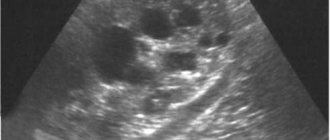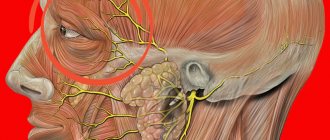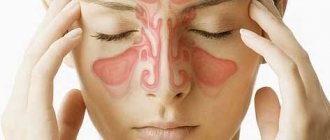Author
: Grachev Ilya Illarionovich
Editor
: Efremov Mikhail Mikhailovich
Date of publication: 05/13/2014 Date of update: 02/16/2020 All doctors of the clinic
The human hand is a very complex part of the body, especially the hand and fingers: they are the ones who perform the most complex and delicate work. In addition, it is one of the most mobile parts of the body, and it is most susceptible to various injuries. It is not surprising that pain and stiffness in the hand are frequent companions. In addition to injuries, these unpleasant sensations can be caused by various diseases.
Unpleasant sensations in the hands should not be ignored, because acute pain can become a symptom of a serious illness. And even if the pain syndrome is a sign of a banal bruise, you still shouldn’t underestimate it, because the resulting discomfort can deprive you not only of the opportunity to work, but also to live a full life.
Why does the hand hurt in the wrist: causes, treatment, diagnosis
Why does your wrist hurt, the main causes and effective treatments.
One of the most flexible joints in the human body is the wrist joint; it connects the hand and forearm, allowing a person to perform many different movements, be it finger movements, flexion or extension of the hands.
The joint itself has a rather complex, fragile structure, so it is often injured, which can cause acute pain in the hands.
In this article we will look at the main causes, diagnosis and treatment methods.
Why does my wrist hurt?
The main causes of pain are associated with the fact that the hands bear the heaviest load, for example during training, especially strength training, when lifting and carrying heavy loads, as well as with the advent and increasing penetration of smartphones into our lives, a colossal load began to come to the thumb load.
Joint pain may indicate the following diseases:
- Injuries can be a dislocation, fracture, bruise, sprain or rupture of ligaments. Often, injuries are characterized by pain at the injury site, soft tissue swelling, and bruising. A fracture may be accompanied by a sprain.
- Arthritis (including rheumatoid) is an infectious disease of the joints, leading to deformation of the hand, decrease and further loss of motor activity. A very common disease.
- Arthrosis - diagnosed after injuries, makes itself felt when moving, and practically does not remind of itself at rest.
- Tenosynovitis (de Quervain's disease) - occurs in people who often make movements reminiscent of squeezing clothes with great effort. The disease itself differs in that when the hand is abducted, the pain radiates to the end of the thumb or elbow. But straightening the thumb does not cause pain.
- Carpal tunnel syndrome – wear and tear of the tendon, inflammation of the nerves. Often these are patients who work a lot at the computer.
- Tendinitis is the result of excessive stress, and professional athletes often suffer from it.
- Carpal tunnel syndrome - women are susceptible during pregnancy in the second and third trimesters, due to a sharp increase in body weight. It manifests itself as pain, numbness of the limb, especially at night.
Diagnostics
Diagnosis of any of the diseases must be timely; in case of acute pain, first aid is certainly required, followed by contacting a doctor and prescribing treatment.
Any disease in which the wrist hurts has distinctive signs sufficient for an accurate diagnosis by a specialist. It happens that clinical signs are still not enough, then they resort to using additional methods.
It can be:
- radiography,
- puncture,
- MRI,
- blood analysis.
Doctors are often forced to use a set of methods to determine the disease, its severity and determine treatment methods.
Urgent Care
This is stopping bleeding using tourniquets or improvised means: a belt, tie, etc. After stopping, the wound should be covered with a sterile napkin and the limb should be fixed using splints, splints, or a plank. Apply cold and ensure complete rest while going to the specialist.
Traditional medicine
The most effective treatment method now is a multi-faceted effect on the human body.
Modern medicine offers:
- Application of fixing plaster bandages, splints, and fixatives.
- Physiotherapy.
- Therapeutic physical education combined with massage.
- Treatment with special drugs - medication.
- In extreme cases, surgical intervention.
Traditional methods
In addition to traditional methods of treatment, many are accustomed to resorting to traditional methods.
So, if your left wrist hurts, you can use a ginger compress , which speeds up the process of recovery and getting rid of toxins.
- To obtain a solution, pour boiling water over the ginger root and let it stand.
- Take a soft cloth, moisten it and apply it to the sore wrist for fifteen minutes.
At night you can use burdock leaf .
Kefir compress with chalk has proven itself well .
- You need to mix the ingredients until you get a mixture,
- which is then applied to the affected area and wrapped with film.
Medicines
We will also highlight the main groups of medications used to relieve symptoms and treatment.
- The first group includes painkillers Ketonal, Ketanov and their analogues.
- The second group is anti-inflammatory drugs - Larfix, Ortofen , prescribed for osteoarthritis and arthritis of the joints.
- The third group consists of drugs - chondroprotectors , prescribed for arthrosis in order to restore motor activity of the joints.
- A separate group includes preparations containing calcium - Calcemin .
- The last group consists of antirheumatic drugs that prevent the development of irreversible consequences, corticosteroids and other combination drugs.
Prevention
To keep your hands healthy, prevention is necessary.
We will give you a number of useful tips to help you maintain your health!
- It is necessary to regularly perform exercises to strengthen the muscles of the wrist
- If pain occurs, you need to stop or change the load
- Reduce the rate of repeated movements and applied effort
- Perform gymnastics, change position and posture more often
- Pick up objects with a brush rather than with individual fingers
- If you work with vibrating objects, you need to use special absorbent gloves and pads
- When playing sports, use special gloves on your wrist.
- Take a break when working at the computer
- Try not to lift weights
- Wear comfortable shoes to prevent falls
Source: https://artritsystavov.ru/prichiny-bolej/bol-v-levom-zapyaste-ruki.html
Fracture
The human wrist consists of eight bones, each of which is susceptible to damage due to injury. Damage to the radius or ulna in the area of their articulation with the carpal bones can often be mistaken for a wrist fracture.
Typically, symptoms of a fracture are pain, swelling, limited movement, and sometimes deformation of the limb. There are closed fractures, which are characterized by the absence of visible damage, and open ones, in which there are wounds on the body.
Treatment involves immobilizing the joint, using medications to reduce the severity of pain, vitamins, and minerals.
Sometimes it can be difficult to distinguish a fracture from another injury, so the diagnosis is always made based on the results of an x-ray examination.
Wrist joint hurts
There are several reasons why your hand hurts in the wrist area. These are injuries with unexpressed symptoms, tendinitis, peritendinitis, tendovaginitis, osteoarthritis, tunnel syndrome, hygroma, arthritis, synovitis, as well as stress on the hands due to professional activities. You should consult a doctor in a timely manner and undergo a course of treatment, adhere to preventive recommendations.
Sprain
Connective tissue is stretched due to a force that exceeds its strength, for example, due to a fall with emphasis on the hands. When stretched, partial or complete rupture of the fibers occurs. In addition to pain, the condition is characterized by limited mobility, swelling, and the sore spot aches. The main causes of injury are the following factors:
- strong tug on the wrist;
- playing sports where the load on the hands dominates;
- regular lifting of weights;
- diseases that cause weakness of the ligamentous apparatus.
Fractures and dislocations
A severe sprain can be combined with a dislocation because the injured tissue weakens and does not hold the joint in place.
A fracture is the most common wrist injury.
As a result, the articular heads shift, but the integrity of the bone is preserved. When a fracture occurs, the bone breaks, swelling occurs, aching pain in the wrist when bending or rotating, and limited movement. The reasons why injuries occur are as follows:
- falling with emphasis on hands;
- doing strength or extreme sports;
- pinching of the hand by elevator doors or transport doors;
- professional activities associated with improper lifting of weights;
- lack of microelements, especially calcium.
Peritendinitis
Because of this disease, the tendon in the area where it connects to the muscle tissue becomes inflamed. Peritendinitis in the joints of the hand is characterized by severe pain radiating to the fingertips, grinding and crunching in the wrist, proliferation of the joint capsule, limited motor function, and a feeling of numbness. The disease occurs due to the following factors:
- regular lifting of weights;
- professional activity, where the load on the hands dominates, and work is associated with monotonous movements;
- infectious diseases.
Tendinitis
Tendonitis is localized in the area where the tendons of the hand join.
The disease is characterized by inflammation and dystrophic changes in tendon formations and can occur in acute or chronic form.
The main manifestations are snapping or crunching of the wrist, pain when moving or pressing, hyperemia of the skin of the wrist joint, local increase in temperature. The following factors provoke pathology:
- muscle neuropathies;
- infectious diseases;
- joint ailments;
- violation of metabolic processes;
- immune failures;
- injuries.
Tenosynovitis
The pathology is provoked by inflammation of the synovial membrane in the area of the muscle tendon sheath. Tenosynovitis has infectious and non-infectious etiology.
Tenosynovitis can occur during pregnancy or after childbirth due to hormonal imbalances.
The disease is characterized by swelling, acute pain in the right or left wrist, the wrist joint does not bend, and crepitus is felt when moving. The disease is caused by the following reasons:
- monotonous work associated with fine motor skills of the hand;
- purulent processes in the body;
- infectious diseases;
- rheumatic pathologies: ankylosing spondylitis, scleroderma, rheumatoid arthritis;
- regular contact with toxic substances.
Osteoarthritis
Osteoarthritis is an inflammatory disease that destroys cartilage tissue.
Healthy cartilage in a joint is flexible, elastic and has a shock-absorbing function. With osteoarthritis, the cartilage tissue becomes thinner, the heads of the bones rub against each other, becoming rough, when under load, the left or right wrist hurts greatly, and severe articular deformity or bones appear. Etiology of the disease:
- undiagnosed or undertreated injuries;
- lack of calcium and vitamin D;
- hormonal disbalance;
- violation of metabolic processes;
- regular contact with pesticides;
- hypothermia;
- various types of arthritis.
Carpal tunnel syndrome
Carpal tunnel syndrome is a neurological disorder in which a nerve is pinched. The circumstances when the hand is swollen at the wrist, the function of grasping and holding an object is partially weakened, and a feeling of numbness or burning occurs in the fingers are as follows:
- excess body weight;
- deterioration of the endocrine system;
- swelling of the extremities in pregnant women;
- thickening and deformation of bones as a consequence of Paget's disease;
- renal failure;
- gouty or rheumatoid arthritis.
Hygroma of the wrist
Chronic trauma causes a bursa cyst.
The pathology is characterized by the appearance of a lump filled with joint fluid.
Hygroma causes pain in the wrists after training or physical activity, and discomfort is felt when trying to grasp an object.
The growth of the tumor in size can occur slowly or rapidly. A tumor can occur under the following circumstances:
- hereditary predisposition;
- unsuccessful surgical intervention;
- injuries;
- regular lifting of weights.
Rheumatoid arthritis
Pathology refers to autoimmune diseases, the etiology of which is not clear. The knees are most often affected.
With arthritis of the upper extremities, the hands become inflamed, swollen and painful, the wrist joints are deformed, bones form, stiffness is felt in the morning, the function of grasping or holding is partially or completely lost, and mobility is limited. The occurrence of the disease is preceded by the following unfavorable factors:
- hypothermia;
- infectious diseases, especially those caused by staphylococci, streptococci, herpes viruses;
- incorrect vaccination;
- psycho-emotional instability;
- hormonal disbalance;
- hereditary predisposition.
Neoplasms
Tumors often cause inconvenience due to a cosmetic defect.
Tumors on the wrist are benign, malignant and metastatic. These include cysts, lipoma, hemangioma, fibroma, xanthoma, sarcoma, synovioma. Almost all neoplasms are characterized by pain, visual changes in the wrist, and hand dysfunction. The etiology is as follows:
- decreased immunity;
- unfavorable environmental conditions;
- bad habits;
- depression;
- overweight.
Inflammation of the joint membrane (synovitis)
The inflammatory process during synovitis involves the joint capsule, tendon sheaths, and cavities. The disease occurs due to the following pathological conditions:
- injuries;
- infections;
- damage to joint components;
- hormonal imbalance;
- violation of metabolic processes.
Other reasons
Wrist pain in the right or left hand may be associated with muscle spasms during work that requires strain on the hand. Usually this pain goes away after a short warm-up. Joints may hurt during weather changes.
Fluctuations in atmospheric pressure affect the pressure in the joint capsule, irritating the nerves, which causes aching and pain in the hands and aching bones.
People with rheumatism, osteochondrosis or arthrosis of the wrist joint are sensitive to weather changes.
Traditional therapy
If your wrist is sore and swollen, the limb should be provided with complete rest. If an injury is diagnosed, it is recommended to wear a rigid brace - a cast, orthosis or splint. New growths are removed surgically. If the joints are inflamed due to infection, the process can be stopped with antibiotics or anti-inflammatory ointments:
- "Piroxicam";
- "Voltaren";
- "Dolgit";
- "Fastum";
- "Ibuprofen";
- heparin ointment.
Physiotherapy
Physiotherapeutic procedures contribute to the patient’s rapid recovery.
If severe joint pain develops, the following physiotherapeutic methods are recommended:
- inductothermy;
- electrophoresis;
- laser treatment;
- thermal wraps with ozokerite or paraffin;
- exposure to ultrasound.
The procedures help relieve pain and have the following therapeutic effect:
- improve the production of synovial fluid;
- restore mobility;
- stop the inflammatory process;
- eliminate muscle spasm;
- help accelerate the process of tissue regeneration, especially cartilage.
Physiotherapy
In combination with medications and physiotherapy, it is recommended to treat wrist pain with the following exercises:
- flexion-extension of the arm;
- clenching and unclenching fingers;
- rotational movements of the brush;
- wave-like movements of the hands, clasped in a “lock”;
- rolling a ball placed under the palm.
Where did the problem come from?
Only a doctor can understand exactly why there is pain in the wrist joint. The doctor interviews the patient, establishes the specifics of the case, sends for x-rays and other studies, analyzes the information received and draws final conclusions. True, not every person has the opportunity to visit a specialist in a timely manner, and the pain syndrome is not so severe that it interferes with work, so ordinary people delay going to the clinic. However, there are cases when a person himself can figure out why his arm hurts and what to do about it.
Most often, pain in the right or left wrist is caused by an injury (sprain, fracture). Dislocations are common, especially if work or other daily tasks involve increased stress on the hands. The level of damage varies quite widely. There are known cases where fractures did not manifest themselves as pain at all, but went away on their own, without external help and the application of a plaster cast. Another scenario is also possible, when a seemingly simple bruise received completely by accident causes unpleasant sensations for a long time.
Wrist pain
The wrist joint connects the forearm and hand, allowing movement in three planes (extension, flexion and rotation). It is one of the most flexible joints in the human body. Finger movements also occur thanks to him. The joint consists of many small bones, so it is easily susceptible to various injuries.
The wrist joint is often susceptible to damage, since it bears the maximum load. Diseases that cause joint pain include:
- Injuries: sprains, bruises, fractures and dislocations. Appear as a result of a blow or fall with emphasis on the wrist joint.
- Arthrosis. It mainly develops in old age, but post-traumatic arthrosis is also common.
- Arthritis is inflammation of the joint capsule and articular surfaces.
- Tenosynovitis or de Quervain's disease. More often it occurs with constant stress on the hands and hormonal changes in the body.
- Tunnel syndrome. The cause is compression of the median nerve in the carpal tunnel.
Symptoms and Treatments for Wrist Pain
The clinical picture depends on the disease that causes pain in the wrist joint. Only a doctor can make an accurate diagnosis and prescribe appropriate treatment with the help of additional research.
Injuries
Injuries to the wrist joint include: bruises, sprains, dislocations and fractures.
Injuries occur when a joint is impacted by a heavy, hard object due to a blow or fall. Their symptoms are similar:
- with a strong blow, a sharp pain in the wrist may appear, radiating to the fingers;
- swelling;
- moderate or complete restriction of movement in the joint;
- hematoma or hemarthrosis may appear;
- pain on palpation;
- joint deformation.
If an injury occurs, immediately provide first aid and consult a doctor.
First aid:
- Immobilization of the hand with bandages or improvised means.
- If the wound is open, stop the bleeding.
- Apply cold to the damaged area (every half hour for 10 minutes to prevent hypothermia) to relieve pain and relieve swelling.
- Deliver the patient to a medical facility.
After diagnosis, the doctor will prescribe appropriate treatment for the wrist. For dislocations and fractures, a plaster cast is applied and medications are prescribed. The recovery period is accompanied by physiotherapy and exercise therapy.
Arthrosis
Arthrosis often occurs in older people due to degeneration of cartilage tissue. It can also be a consequence of injury. Symptoms of arthrosis:
- wrist pain when flexing and extending the hand with a characteristic crunch (then occurs at rest);
- pain on palpation.
In the treatment of arthrosis, drugs are prescribed - chondroprotectors, which help slow down the processes of degeneration of cartilage tissue. Kinesiotherapy, physiotherapy and massage have a positive effect on recovery.
Arthritis
Inflammation of the joint capsule can be caused by various factors: infectious, metabolic, autoimmune. Arthritis causes severe pain, swelling, and stiffness in the joint.
Treatment of the disease depends on the cause. After diagnosis, additional studies and tests, the doctor prescribes appropriate treatment measures.
De Quervain's disease (tenosynovitis)
De Quervain's tenosynovitis is an inflammation of the tendon sheath of the 1st osteofibrous extensor canal. Develops with frequent similar movements of the hand (for example, in loaders, skiers, pianists). Characteristic symptoms of tenosynovitis:
- pain occurs when moving the hand and thumb, sometimes radiating to the elbow;
- pain on palpation in the area of the styloid process.
For tendovaginitis, non-steroidal anti-inflammatory drugs are prescribed. They are used both internally and locally. Physiotherapeutic procedures are also recommended. In case of chronic disease, surgery is prescribed.
Carpal tunnel syndrome
Carpal tunnel syndrome appears due to compression of the nerve during the same type of work (for example, in people who work at a computer or as machinists), due to hormonal disorders. Symptoms of carpal tunnel syndrome:
- pain spreading along the palmar surface of the hand and wrist;
- tingling and numbness;
- Sometimes my fingers hurt.
In case of tunnel syndrome, it is recommended to consult a neurologist or orthopedic traumatologist. Treatment is carried out using anti-inflammatory drugs (orally and locally), B vitamins and nicotinic acid (injections). In severe cases, surgical intervention is indicated in which the carpal ligament, which compresses the nerve, is dissected.
Diagnosis of wrist pain
To make an accurate diagnosis and prescribe treatment, it is necessary to undergo an examination. Sometimes one diagnostic method is enough, and in some cases it is necessary to use a complex of studies. Diagnostic methods:
- blood analysis;
- radiography;
- joint puncture;
- MRI;
- Ultrasound of the joint;
- CT.
If you experience pain of any kind in your wrist, the first thing you should do is consult a doctor. The main principle of treatment is to eliminate the cause of pain. You cannot treat yourself, as you can make a mistake in the diagnosis and aggravate the course of the disease.
Source: https://www.ortomed.info/articles/ortopediya/hirurgiya-kisti/bol-v-zapyaste/
Gouty arthritis
An attack of gouty arthritis is provoked by errors in diet - consumption of meat, fatty, smoked foods, alcohol.
With gout, urate, a salt of uric acid, accumulates in the joints. More often the joint at the base of the first toe becomes inflamed, then the process spreads to other joints, including the wrist joint. The pain is very pronounced (burning or throbbing), which is accompanied by swelling, redness and can last up to several days. An attack of gout should be treated with anti-inflammatory drugs (Diclofenac, Celebrex). A strict diet is prescribed with the exception of meat dishes, legumes, alcohol, and tomatoes. Outside of an exacerbation, you need to take allopurinol, which reduces the amount of uric acid in the blood.
Pain in the wrist of the right or left hand: causes, diagnosis, treatment
Photo from infox.ru
In most cases, pain originates in the area of the wrist bones. It is extremely rare that discomfort comes from other parts of the body. The painful sensation may be accompanied by creaking, decreased mobility, increased temperature and deterioration of well-being. Sometimes the pain becomes so severe that the patient cannot perform usual movements.
Causes of pain in the wrist area
The wrists are the most active part of the body. It is the metacarpal bones that bear the lion's share of the load. The wrist joint is involved in rotation, flexion, force and static efforts; with its help we write and hold objects. Therefore, it is not surprising that this area of the arm hurts more often than others.
The causes of wrist discomfort can be acute or chronic. The first includes various injuries and damages. Systemic or slowly progressive inflammation of the metacarpal bones is considered chronic. Much less often, pain in the wrist area occurs due to congenital structural defects or malignant neoplasms.
Ligament damage
The most common cause of discomfort. Pain can be caused by a fall, a blow to the arm, a sharp tug on the wrist, or an awkward movement under load. In all these cases, the patient will complain of:
- severe pain in the wrist;
- swelling and redness of the joint;
- limitation of mobility.
Both the ligaments of the wrist joint and the connective tissue parts of the forearm can be damaged. These injuries should be taken very seriously, as poor treatment or lack thereof can lead to loss of functionality.
Tendinitis
A professional problem for athletes (tennis players, ball players) who often have pain in the wrist joint of their dominant hand. The cause is regular excessive loads on the limb, expressed in flexion/extension and pushing movements. The result is inflammation of the tendon tissue and severe pain in the joint.
A characteristic sign of tendonitis, which helps distinguish it from other diseases with similar symptoms, is cracking in the wrist. The sound is observed when moving the joint and trying to straighten the fingers. Gradually, the patient begins to have problems grasping objects.
Carpal tunnel syndrome
One of the types of chronic tendovaginitis. Often observed in pregnant women in the 2nd and 3rd trimesters. Manifested by the following symptoms:
- numbness of the wrist and palmar surface to the little finger;
- pale skin on the hands;
- difficulty grasping and holding objects;
- cold fingers.
Wrist pain is accompanied by burning and itching of the inflamed area, tremors, and tingling of the skin. Discomfort increases at night and practically disappears during the day. The reason for this phenomenon is swelling, which compresses the nerve endings in the wrist joint.
Fracture
Particularly severe pain in the hand and wrist is caused by damage to the lunate, radius and scaphoid bones. Upon examination, you may notice severe deformation of the joint, swelling, hematoma, and unusual joint mobility.
With a small fracture or crack in the bone, the patient may not pay attention to the pain and leave the pathological condition without treatment. Such negligence can lead to complete immobility of the wrist joint.
Bone necrosis
Severe and difficult to treat pathology. It is more often diagnosed in men of working age from 20 to 55 years. The cause of the lesion is deterioration of blood circulation in the limb. A distinctive feature of the ailment is asymmetry - in left-handed people the wrist of the left hand suffers, in right-handed people - in the right.
Osteonecrosis progresses rapidly and requires serious treatment. In the absence of therapy, the patient is bothered by constant pain in the wrist joint , which intensifies during physical work. Palpation of the inflamed area causes discomfort, the joint swells and loses mobility.
Tumor
Tumors in the wrist area can be benign or cancerous. The latter are rare and can occur against the background of other joint lesions or as a result of metastasis.
Chondrosarcoma is most common on the metacarpal bones. It develops after 45 years and originates from the cartilage cells of the joint. Men experience the disease twice as often as women. The early stages of oncology are asymptomatic, then discomfort occurs in the wrist area, and the radius and shoulder begin to ache. Metastases appear in 10–12% of patients and most often spread to the lungs.
Hygroma
Refers to benign tumors. It is a round neoplasm that rises above the skin and is filled with serous fluid. Occurs after operations, wrist injuries, or as a result of excessive loads due to weakness of the joint capsule.
Initially, the ganglion appears as a small swelling under the skin with an elastic consistency. As the cyst grows, it begins to hurt, causing particular suffering when pressing and bending the wrist. It is more common in young women aged 20–40 and noticeably spoils the appearance of the hands. Read more about hygroma→
General principles of treatment
What to do if your wrist hurts? The treatment regimen depends entirely on the root cause that caused the discomfort. If the metacarpal bones are fractured, a plaster cast is applied to the injury site. Sprained ligaments are treated by applying ice followed by fixation with a bandage.
Medications
To relieve pain and improve mobility, the patient is prescribed the following groups of medications:
- Anesthetics - Ketanov, Nise, Tylenol.
- Anti-inflammatory medications - Ortofen, Diclofenac, Larfix. Used for arthrosis and arthritis.
- Chondroprotectors - Alflutop, Teraflex, Movex, Dune, Artron, Artra. Necessary for osteoarthritis.
- Corticosteroids - Diprospan, Hydrocortisone, Celeston, Prednisolone. They relieve pain in joint pathologies well.
- Immunosuppressive drugs - Imuran, Arava. Used to combat rheumatoid arthritis.
- Calcium-containing preparations - Calcemin, Calciflor. Prescribed for wrist fractures.
For local pain relief, anti-inflammatory and anesthetic ointments are used - Dolobene, Voltaren Emulgel, Amelotex, Fastum gel, Indomethacin, Methindol, Nise, Finalgon, Apizartron. They are applied to the wrist area 2-3 times a day until the condition improves. Physiotherapy provides a good effect for severe pain - UHF, magnetic therapy, ozokerite applications, electrophoresis, massage.
Photo from the site womanadvice.ru
Hygroma is most often treated surgically. Conservative care usually does not have much effect and the patient's condition steadily worsens. After removal of the tumor, cauterization of the bottom of the surgical wound is performed to speed up the formation of connective tissue.
Folk remedies
In addition to medications, alternative medicine recipes can be used to treat wrist pain.
A ginger compress gives a good anesthetic effect. To prepare the medicine, the burning root (2–3 cm) is crushed, poured with a glass of water and boiled for 3 minutes.
Let it brew and use it for lotions - a napkin folded in several layers is moistened with hot broth and placed on the wrist. Cover the top with plastic wrap and secure with a bandage. Keep for 15 minutes.
At night, to reduce pain and inflammation, you can bandage a fresh leaf of burdock or cabbage.
Symptoms and diagnosis
To determine the cause of the pain, it is necessary to undergo an x-ray examination.
The doctor must also conduct an examination, determine the location and nature of the pain, and the presence of crepitus.
Certain symptoms will help diagnose a specific disease:
- Tendon sprain . They manifest themselves as swelling and acute pain in the wrist, limitation of hand movements, instability of one or more joints. The affected area swells over time.
- Fracture, dislocation of the wrist . With a serious injury to the wrist, acute pain, bruising, swelling occurs, and unnatural mobility occurs in the joint. During examination, joint deformation can also be observed. A mild fracture is characterized by swelling and mild discomfort in the wrist. Such an injury is dangerous because it can be misdiagnosed, resulting in the lack of proper treatment. Subsequently, the joint may lose mobility.
- Tunnel syndrome . A characteristic feature of the disease is constant pain in the wrist, as well as weakening and numbness of the hands, especially the palms. There is a tingling and burning sensation in the hand, and swelling appears after sleep. Symptoms occur at night or in the morning. Over time, the fingers and palm lose a lot of sensitivity.
- Tendinitis . It begins gradually, during activity the pain in the wrist intensifies, and a crunching sound is heard in the tendons during movement. It becomes difficult for the patient to grasp any objects with the affected hand.
- Peritendinitis . The disease is accompanied by pain in the wrist, swelling on the back of it, as well as crepitus when moving the fingers. Such symptoms can indicate many diseases, so to clarify the diagnosis, the doctor will need to take an x-ray.
- Wrist pain during pregnancy . In the wrist area, in addition to pain, there is itching, tingling or burning, and trembling in the fingers. Symptoms are worse at night, but can also occur during the day. A woman feels discomfort in her palms. When grasping objects in the fingers, weakness occurs. The hand may become cold; as a result of vasoconstriction, the skin turns pale and sensitivity to cold increases. Swelling may occur in the arms and legs, and the patient's general condition worsens.
- Tenosynovitis . It affects the muscles that control the movements of the thumb. It manifests itself as pain in the wrist on the side of the first finger, inflammation and soreness of the skin at the site of the lesion. Over time, a scar appears in this place, which can be felt through the skin.
- Avascular necrosis . It occurs after a wrist injury; if you press on the affected bone, painful sensitivity appears. Necrosis is uneven: it can appear over 1–2 weeks, after which it disappears for several months. In general, the disease can last for several years, accompanied by pain in the wrist joint, which does not disappear at any time of the day, and intensifies when working with the hands.
- Osteoarthritis of the wrist joint . It manifests itself as pain in the joint that increases during the day, limited mobility, as well as the occurrence of painful sensitivity when pressing. Clicking and crunching sounds are heard in the affected joint. In the absence of proper treatment, the pain intensifies, not disappearing even after rest, and the hand loses more and more mobility. Sometimes an exacerbation of the disease can continue for several months, and in some cases the attack goes away in a few days.
- Acute arthritis - pain, swelling and redness of the skin in the affected area are pronounced, and an increase in temperature is also observed.
- Chronic arthritis - occurs slowly, without obvious manifestations, with rare pain. As a result of this lack of expression of the disease, the patient may not pay attention to it, leading the diseased joint to complete deformation and even destruction. Pain occurs regardless of whether the joint has been subjected to physical activity. In the morning, there is a feeling of stiffness in the affected area.
"Interesting" situation
Pregnant women often experience wrist pain. Doctors call this carpal tunnel syndrome. If at the beginning of the pregnancy pain appears rarely and does not cause any particular concern, then closer to childbirth such sensations may be a cause for concern. It is quite possible that the root cause is a violation of the integrity of the median nerve located in the upper limb. Carpal tunnel syndrome can be triggered by the kilograms a woman gains during pregnancy. Additionally, the situation is complicated by edema, which many expectant mothers are prone to.
As practice shows, the described syndrome can provoke not only pain in the wrist, but also a burning sensation in this area. Others describe the sensation as tingling. It is known that the syndrome can cause tremors. Often the pain becomes stronger during the rest period, especially at night, and this interferes with sleep. The nerve damage is due to disruption of a tissue element located near the first four fingers. But the little finger never bothers me. If not only the wrist, but the whole hand hurts, the cause is not carpal tunnel syndrome, but something else. As a rule, in addition to pain, pregnant women are worried about edema, swelling, and overall health becomes worse. In most cases, discomfort goes away on its own immediately after childbirth. In rare cases, this takes some time.
Carpal syndrome
Often the possible causes of wrist pain are of interest to people who are forced to type on a computer keyboard for a long time. The peculiarities of the movements are such that the tendons quickly wear out, the nerve roots become inflamed, and this affects the performance of the ligament apparatus. Most often the pain occurs in the right hand, but can bother both limbs. Left-handed people usually have pain in their left hand, as the load on it is greater.
It is possible to assume that the cause of pain in the wrist is carpal syndrome if the palm becomes numb and muscle weakness is felt when trying to grasp an object with the hand. The pain is localized in the wrist. There are many cases where this form was observed against the background of spinal injury. The risk group includes those suffering from vertebral hernias and osteochondrosis.
What else will help?
Sometimes ointments and gels are used to relieve wrist pain. If the doctor detects a severe form of arthritis, arthrosis or other diseases, they may prescribe injections or tablets. To enhance the effectiveness of the medication program, the patient is referred to physical therapy. Common techniques are electrophoresis, UHF, therapeutic massage, treatment using a magnetic field. To eliminate the pain syndrome, a course of painkillers may be prescribed, and if an inflammatory process is detected, medications that relieve it. Sometimes your doctor will recommend a treatment program with medications designed to protect and improve joint function. Calcium supplements are helpful, and for swelling and pain, corticosteroids may be prescribed. If all the described measures do not show a positive result, surgical intervention is performed.
To avoid pain, warn
If curing wrist pain is not always easy, then preventive measures are not particularly difficult, the main thing is to be systematic. The very first and most important thing is gymnastics for the joint, which increases the tone of organic tissues and strengthens the muscles. A few exercises are enough during a regular exercise routine - twist your fists in different directions, rotate your palms, stretch your fingers. In short, everything was as taught in physical education lessons. Surprisingly, it really works! If gymnastics does not help and discomfort begins to bother you, then it’s time to think about changing your lifestyle. The first step is to evaluate what is putting stress on your wrists and minimize those movements. When grasping objects, you should tense your hand, and not just your fingers. Regular gentle massage of the limbs will not be superfluous.
To get the maximum benefit from playing sports, you should set aside at least 45 minutes for such activity every day, and it’s better to set aside a whole hour. It is not necessary to train hard, forcing the body to fight heavy loads. You can do simple but useful exercises. Due to regular, uniform load, blood flow is activated, the quality of the respiratory system improves, which means that all tissues and organs will be saturated with oxygen and nutritional components. This has a positive effect on both bone and muscle tissue. If mild pain in the wrist has already begun to bother you, regular training with reasonable loads will help completely get rid of this problem - unless, of course, the cause is inflammation, when the affected area needs rest.










